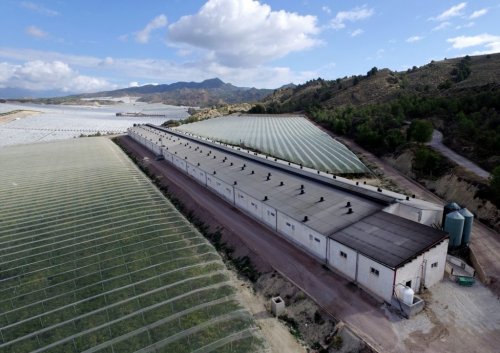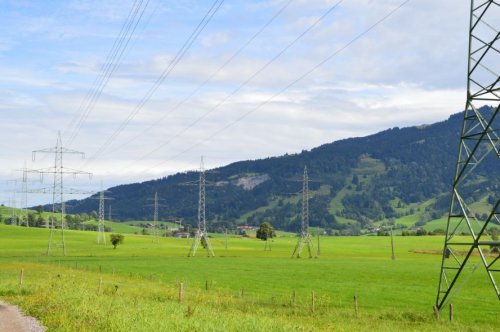Classification of electrical receivers according to the reliability of power supply in agriculture
According to PUE, all electrical receivers are divided into three categories according to continuous power supply. The characteristics of the classification of electric receivers in agriculture are related to the way of operation of its users. First, there are quite a few electrical receivers with complete inadmissibility of power interruption. Secondly, it is necessary to distinguish category II energy users not only in terms of duration, but also in terms of the degree of damage.
Category I includes all consumers of electricity, the interruption of the electricity supply to which could endanger human life or cause significant damage to agriculture.
They include:
a) livestock complexes and large farms:
-
for 400 or more heads in milk production;
-
3,000 and more places for cattle when raising heifers;
-
5,000 and more heads per year in growing and fattening young cattle;
-
for 12,000 and more heads per year in raising and fattening pigs;
b) poultry farms for egg production with at least 100 thousand laying hens or for raising at least 1 million broilers;
c) large farms for raising flocks of poultry (at least 25 thousand chickens or at least 10 thousand heads of geese, ducks, turkeys).
At the same time, the first category includes electric receivers that provide the main technological processes (watering, heating of young animals, ventilation, sorting and incubation of eggs, hatching, sorting and transportation of chickens). This also includes electrical equipment that ensures the general life of the enterprise (boiler rooms, pumping stations for circulating water supply, sewage and water lifting, cooling tower, chlorination station).
Category 1 electrical receivers must be powered by two independent power sources and power failure is permitted only for the duration of the automatic power recovery devices.
Depending on the consequences of power failure, electrical receivers II categories are divided into two groups.
A special group of category II includes electrical receivers that allow a break of no more than 30 minutes, and the frequency of such failures should not exceed 2.5 times a year.
This group includes the following electrical receivers:
a) fire extinguishing installations and electrical receivers of boiler rooms with high and medium pressure boilers in all agricultural enterprises;
b) in dairy farms:
-
milking cows in stalls and milking parlors;
-
work lighting for milking parlors;
-
washing cables for milk and water heating;
-
local heating and irradiation of calves;
-
emergency lighting in the maternity ward;
c) in pig breeding complexes and farms: heating and ventilation systems in fattening pig farms and in pig weaning sections;
d) in poultry farms: all other equipment, except those listed above for the first category.
The remaining electrical receivers of category II allow a power outage of up to 4 hours at a frequency of no more than 2.5 times per year; or with a rest duration of 4 to 10 hours with a failure rate of no more than 0.1 per year.
Users of category II include livestock and poultry farms with lower productivity than specified for category I, as well as greenhouses and nursery complexes, fodderbreweries, potato warehouses with a capacity of more than 500 tons with cold supply and active ventilation, refrigerators for storage of more than 600 tons of fruit, fish hatchery shops. This also includes electrical receivers of water towers, heat supply and water supply installations, as well as other electrical receivers of boiler rooms.
The third category includes all other consumers of electrical energy, including the housing stock and public buildings, for which the longest break is one day, and the frequency of such failures should not exceed 3 times a year.
To ensure the necessary reliability of the power supply, it is necessary to make correct technical decisions at the stage of designing electrical networks and substations, when choosing automation devices (ATS and AR), as well as when calculating the power of backup sources.
Obviously, the mutually redundant lines of the distribution network must be fed from two independent sources.However, in order to reduce costs in rural electrical networks, single-transformer substations with a voltage of 35-110 kV are more often used. In this case, outgoing lines are retained by neighboring substations.
Exceptionally, two-transformer substations are built in the following cases:
a) when at least one of the lines supplying consumers of categories I and II cannot be reserved by a neighboring substation or the distance between neighboring substations is more than 45 km;
b) when, according to the design load of the substation, a transformer with a capacity of more than 6.3 MVA is required, which is not redundant due to overloading reasons;
c) when it is impossible to ensure the normalized voltage deviation for consumers in emergency mode.
To increase the reliability of distribution networks 6-10 kV, built according to the basic principle, they are performed along the entire length with alternating conductors of the same section, but not less than 70 mm2... Each line of the distribution network with a voltage of 6 -10 kV is equipped with automatic closing devices double action on the head switch.


